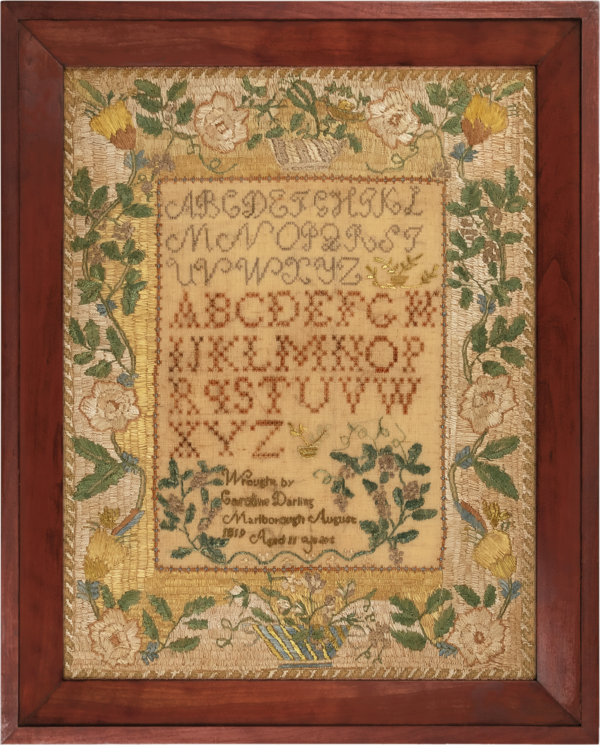Caroline Darling
Marlborough, Middlesex County,
Massachusetts, 1819

One of the most appealing regional characteristics of Massachusetts samplers is the use of long stitches of crinkled silk used to embellish their wide borders. In the 18th and early 19th century, some instructresses taught their students this skill and their samplers have benefited accordingly. Caroline Darling of Marlborough was 11 years old in 1819 when she worked this splendid sampler. She used these long stitches to form an excellent wide framework of flower blossoms on leafy vines combined with two lovely baskets, filling in the entire background of the border, as well. Alphabets worked in cross and eyelet stitches surmount the inscription, which is nicely contained by embroidered grape bunches on tendrilled vines. Whimsical little bowls of leafy branches fill space at the end of each alphabet.
Born in 1808, Caroline was the youngest child of Daniel and Rebecca (Arnold) Darling. The Darling family traces its ancestry in America to John Darling (1605-1668) and his wife Ann (Batten) Darling (1606-1654) who were married in Bristol, England and emigrated to Massachusetts shortly after that. History of the Town of Marlborough, Middlesex County, Massachusetts from its First Settlement in 1657 to 1861, by Charles Hudson (T. R. Marvin & Son, Boston, 1862) includes information about the family, indicating that Caroline’s grandfather, Amos Darling settled in Marlborough.
Caroline married a farmer, Nathan Conant Haynes, in 1836 and they settled in nearby Sudbury where they became the parents of one child, a daughter, Emma. Caroline died in 1867 and is buried in Mount Wadsworth Cemetery, in Sudbury.
Worked in silk on linen, the sampler is in excellent condition and has been conservation mounted into a beveled cherry frame.

